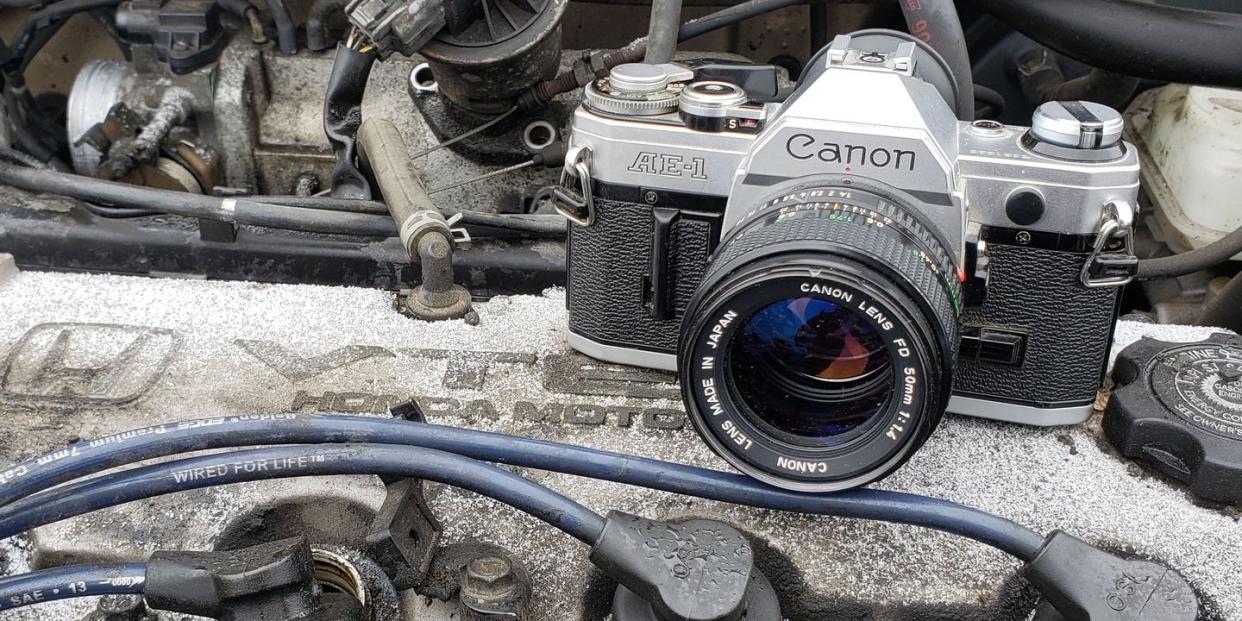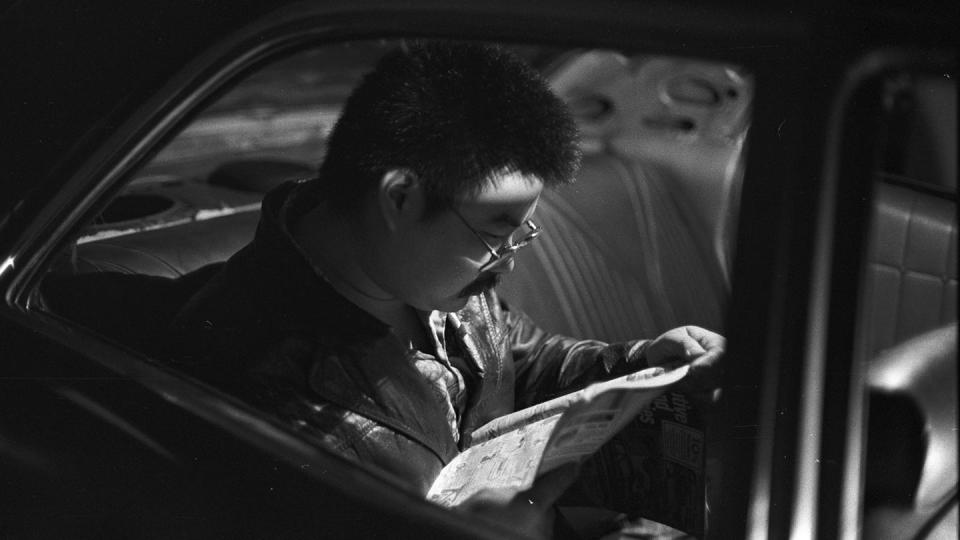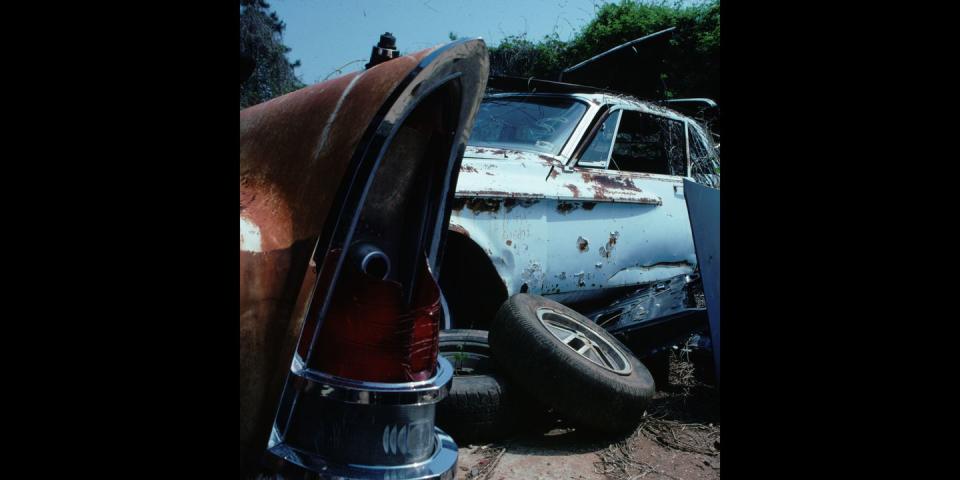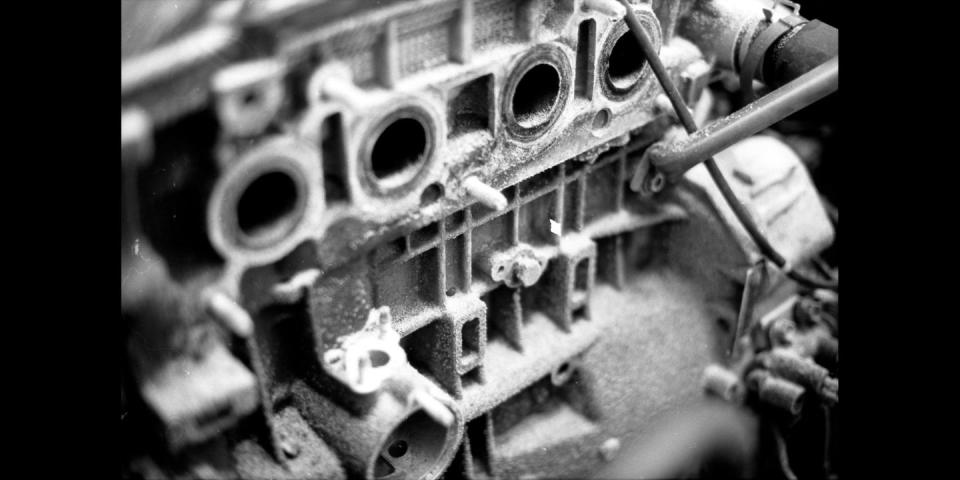Game-Changing 1970s Japanese Camera Shoots Japanese Engines

The Canon AE-1 was a revolutionary piece of design, a sturdy single-lens reflex 35mm camera that stuffed futuristic electronic controls into an affordable package, and it shook up the photography world of 1976 just as powerfully as the Ricohflex did two decades earlier.

My parents bought an AE-1 new in 1980, then loaned it to me later in the decade, when the Regents of the University of California decided that their minions would teach me about photography. I never returned it, eventually shooting many hundreds of rolls of Kodak Tri-X and various flavors of Fujichrome slide film.

When I worked for Year One in the middle 1990s, I shot thousands of photographs for the company's catalogs with my AE-1, and I'm pretty sure some of them are still being used today. But when it comes to taking old film cameras to junkyards, the AE-1 is just too good, its controls too easy and its 50mm lens too sharp to be an entertaining junkyard-photography challenge. Better to bring a 19th-century Kodak, I thought.

But on a snowy Denver day last week, I decided to dust off the AE-1 and use it to photograph other masterpieces of Japanese engineering, taking advantage of the handy depth-of-field-location button to get artsier than your typical VelveetaCam allows. Here are the results, shot in the same car graveyard that gave us the 1982 Lincoln Continental Givenchy last month.

